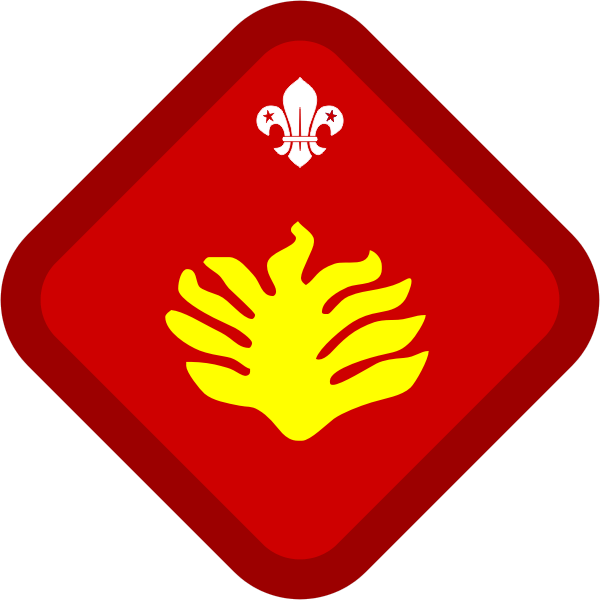


Fire Safety
Complete the requirements below:
- Understand how the local Fire Service is organised.
- Explain what action should be taken and why on discovering the outbreak of a fire in the home or at camp.
- Give an explanation of the process of combustion. Know the effects of smoke and heat, and how to act in smoke.
- Know the dangers and fire precautions necessary in the home relating to:
- Oil heaters and open solid fuel fires;
- Portable electric fires;
- Drying clothes;
- Electric wiring and fuses;
- Smoking materials particularly matches;
- Uses of household gas.
- Party decorations, candles;
- Closing doors and windows.
- Explain the benefits of installed smoke detectors and describe where they should be sited.
- Know the dangers of fire at camp and what precautions should be taken.
- Know the causes of heath and grass fires.
- Know how to make an emergency call for the Fire Service.
- Be able to recognise various fire extinguishers including water, dry powder, foam and carbon dioxide types. Know what kinds of fire they should be used on.
- Know how to deal with a person whose clothes are on fire.
- Talk with your family about the actions to be taken in the event of a fire at home.
Notes
Taking part in a locally organised course with the Fire and Rescue Service can complete this Badge.
Resources
Chubb is now providing resource packs to help Scouts in the UK to achieve their Scout Fire Safety Badge. You can view and download the following resources as PDFs: Poster, Leaflet, Certificate. More information is available at http://www.chubb.co.uk/scouts.
